The U.S. Intelligence Community and the Department of Defense (DoD) are accelerating a massive modernization effort, backed by funds that totaled $106 billion in the last year. This investment is driven by the urgent need for real-time, mission-critical insights powered by AI across multi-domain operations. This week on AppDevANGLE I sat down with Cameron, a former operator and current executive at MinIO, to examine the new reality where storage is a strategic asset, not a commodity. Modernization is complicated by legacy systems, stringent security compliance, and the emerging risk of operationalizing AI at the tactical edge. Successfully bridging this gap requires moving past old air-gapped models to a Sovereign Cloud with a Zero Trust plus AI Security baseline.
Governance Gets Teeth
The speed of AI adoption has forced the government to establish clear governance, a move that is both practical and essential given the risks of misinformation and bias being exacerbated by automation. Recent policy actions underscore this shift:
- The White House initiated national security AI memorandums in October 2024.
- The DoD formalized the Chief Digital and AI Officer (CDAO) to centralize AI data adoption authority.
Cameron notes that this move is refreshing because it leverages AI to provide better decision advantage, from the POTUS level down to the tactical level, while maintaining safeguards.
“Governance is really important, especially when you talk about AI. You have to leverage AI with proper safeguards.”
The core takeaway for all organizations, not just government, is the need for traceable governance. AI efforts must map directly to policies and ATO packages, proving traceability for use, limits, bias mitigation, and privacy.
Scaling Pilots to Programs
A recent MIT study indicated that a large percentage of Gen-AI pilots fail, a statistic that Cameron applauds. In the context of government, “fail fast and learn quick” is a critical strategy. Pilots are essential to moving implementation from hypothesis and speculation to a position of knowledge.
The DoD’s Task Force Lima (now the AI Rapid Capabilities Cell) found widespread Gen-AI opportunities but identified key blockers to scaling, including compute access, streamlined Authorities to Operate (ATOs), and inflexible policy. These challenges reinforce the need to transition from traditional, hardware-centric procurement to a more agile model. The expected outcome is a future of enterprise Gen-AI enclaves that use standardized evaluation playbooks to drive accelerated ATOs and rapid deployment. This innovation is crucial to shortening deployment cycles, replacing the “three days for a help desk ticket” mentality with instantaneous response.
The Edge Explosion
The most significant change in data management is the shift to a federated architecture, where the data explosion is occurring at the tactical edge. With a projected 500 to 1,000 net new AI workloads expected at the edge within the next two years, the challenge of securing information across all classifications, Unclassified, Secret, Top Secret, and Special Compartmented Information (SCI), is immense.
The security of this data boils down to the storage itself.
“Storage is no longer a commodity but a strategic asset.”
Modern operational environments, whether using AWS Snowball, Azure Stack, or similar edge technology, must deal with data sovereignty and vendor lock-in concerns. The rise of High-Tech with Healthcare (HIPAA) and PCI DSS (financial services) issues mirrors the government’s need to control data boundaries. The solution is architecting for portability and securing data at its source: the tactical edge. This means metadata tagging and classifying data at the edge so it complies with all policy requirements before it’s transmitted.
The Zero Trust Baseline
The imperative to modernize is no longer optional; it is a necessity driven by near-peer competitors. This urgency mandates a Zero Trust (ZT) security baseline.
- The DoD is aggressively pursuing its ZT strategy, aiming to achieve Target Level ZT implementation by September 30, 2027.
- International regulations like the EU Cyber Resilience Act (CRA), with reporting due by September 2026 and full application by December 2027, impose severe penalties for non-compliance, including administrative fines of up to €15 million or 2.5% of global annual turnover for critical violations.
This is why Sovereign Clouds built on Zero Trust principles plus AI Security are becoming the new baseline. This model demands continuous monitoring, identity segmentation, encryption from the silicon level (e.g., using trusted domain extensions), and AI-specific hardening and logging for acquisitions and sustainment. The old, expensive model of air-gapped system replication is being replaced by software that can deal with classification at the application level, the only way to keep pace with the mission tempo.
Next Steps
The modernization of the DoD and IC is a blueprint for all regulated industries. Programs must now prove reliability, robustness, and operational sustainability under real-world, contested conditions. Not just model accuracy. To stay ahead in this environment, industry experts recommend engaging with organizations like FCA and INSA, and proactively seeking out innovative vendors. This continuous search for knowledge and engagement is the first defense in a world where data and AI have become the new frontier.



